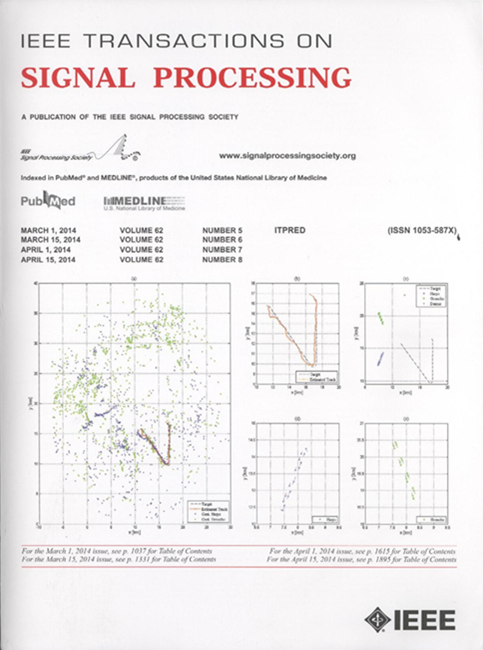Analyses of Successful Sparse Signal Recovery via Tail-$\ell_{2}$ Minimization
IF 5.8
2区 工程技术
Q1 ENGINEERING, ELECTRICAL & ELECTRONIC
引用次数: 0
Abstract
Recovery guarantee analyses of sparse signals by the tail-基于尾部最小化的稀疏信号成功恢复分析
提出了用tail- ell_{2}$最小化方法对稀疏信号进行恢复保证分析。众所周知,传统的$\ell_{2}$最小化缺乏稀疏恢复能力,然而,它的变化通过迭代尾-$\ell_{2}$惩罚过程,在稀疏选择中被证明是非常有效的。tail-$\ell_{2}$公式的解析闭型解也显示了其极好的效率。本文着重分析了利用tail-$\ell_{2}$技术成功回收的原因。建立了尾-$\ell_{2}$最小化问题唯一性的充分必要条件,并与类似的尾-$\ell_{2}$最小化问题的唯一性有本质的区别。固有的差异导致进一步分析唯一性的充分条件,以及可容许解的概念。然后根据这些条件进行成功概率分析。成功恢复$\mathbb{P}_{T}$的估计概率与$T^{c}\cap S$的基数正确相关,其中$T$是解决方案索引$S$的估计支持度。$|T^{c}\cap S|$越小,$\mathbb{P}_{T}$就越大,当$|T^{c}\cap S|$接近0时,$\mathbb{P}_{T}$自然接近1。数值实验充分验证了尾部最小化方法恢复稀疏信号的效率和成功概率。
本文章由计算机程序翻译,如有差异,请以英文原文为准。
求助全文
约1分钟内获得全文
求助全文
来源期刊

IEEE Transactions on Signal Processing
工程技术-工程:电子与电气
CiteScore
11.20
自引率
9.30%
发文量
310
审稿时长
3.0 months
期刊介绍:
The IEEE Transactions on Signal Processing covers novel theory, algorithms, performance analyses and applications of techniques for the processing, understanding, learning, retrieval, mining, and extraction of information from signals. The term “signal” includes, among others, audio, video, speech, image, communication, geophysical, sonar, radar, medical and musical signals. Examples of topics of interest include, but are not limited to, information processing and the theory and application of filtering, coding, transmitting, estimating, detecting, analyzing, recognizing, synthesizing, recording, and reproducing signals.
 求助内容:
求助内容: 应助结果提醒方式:
应助结果提醒方式:


